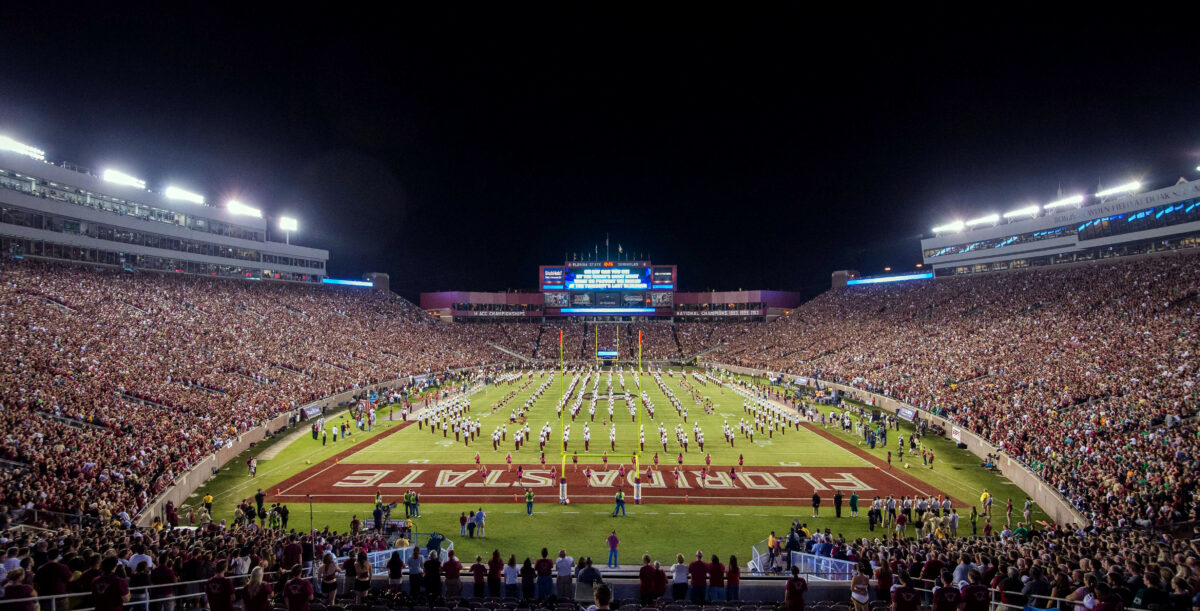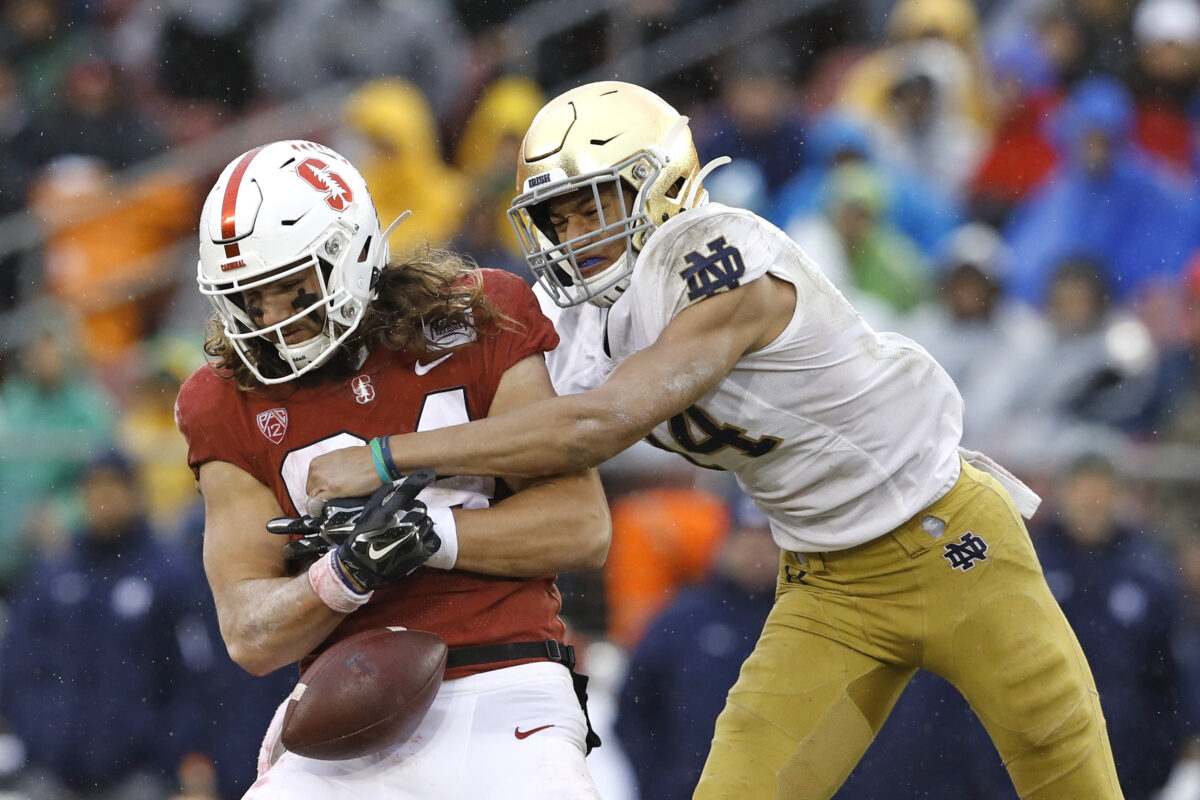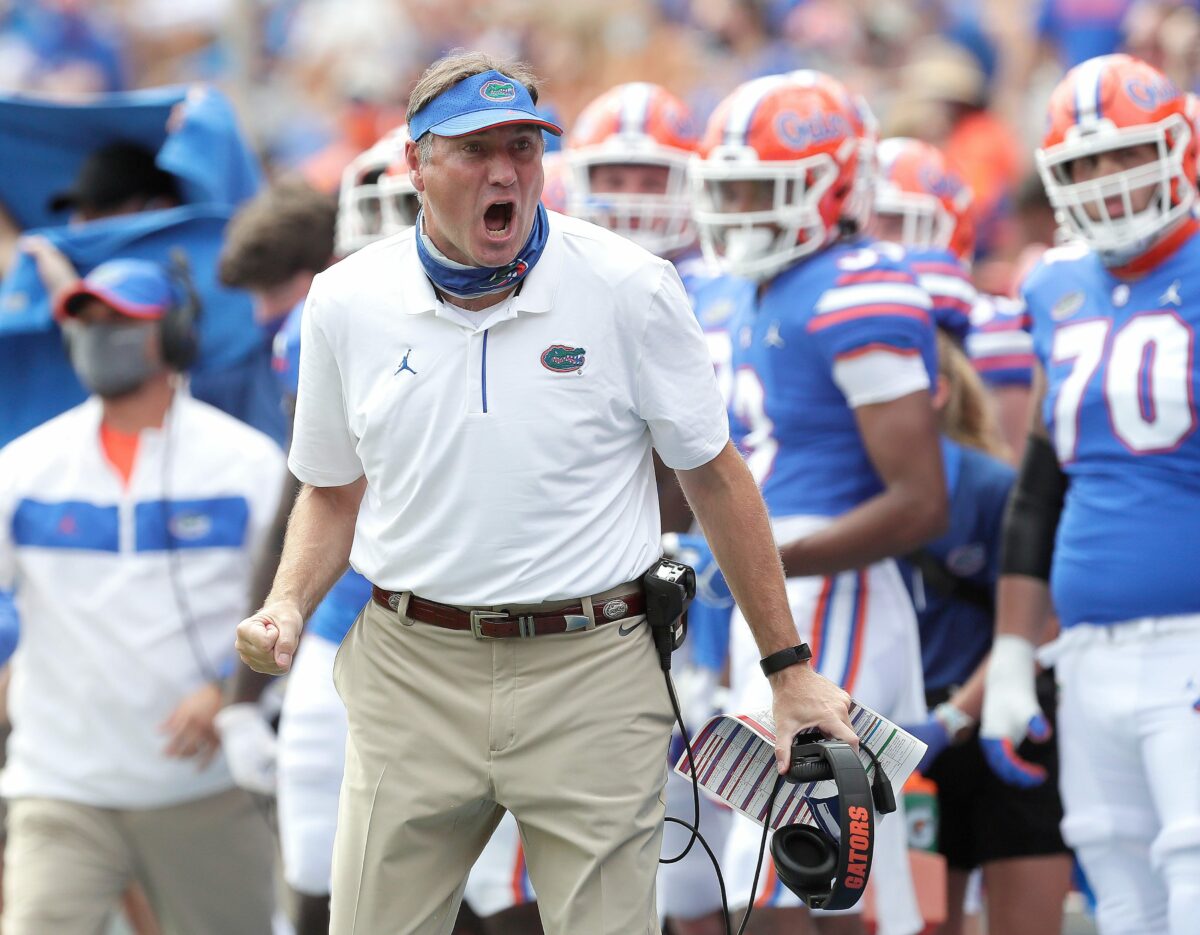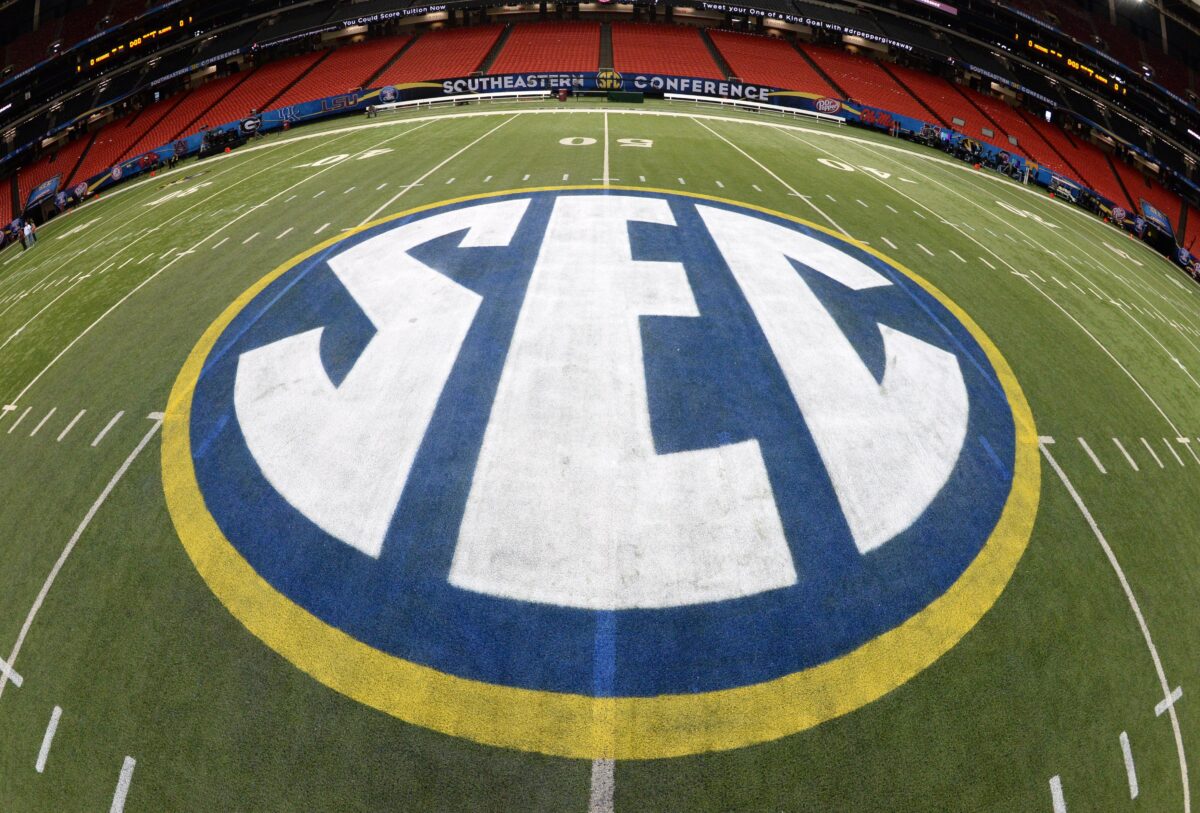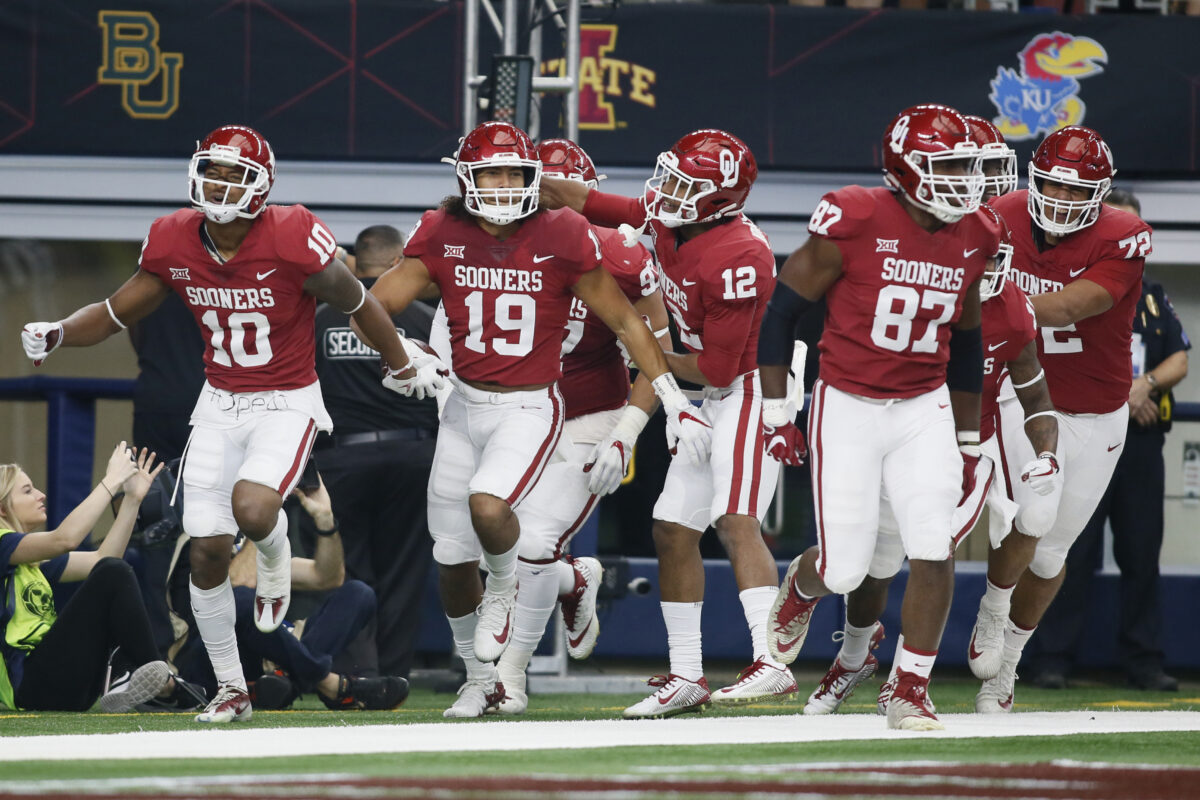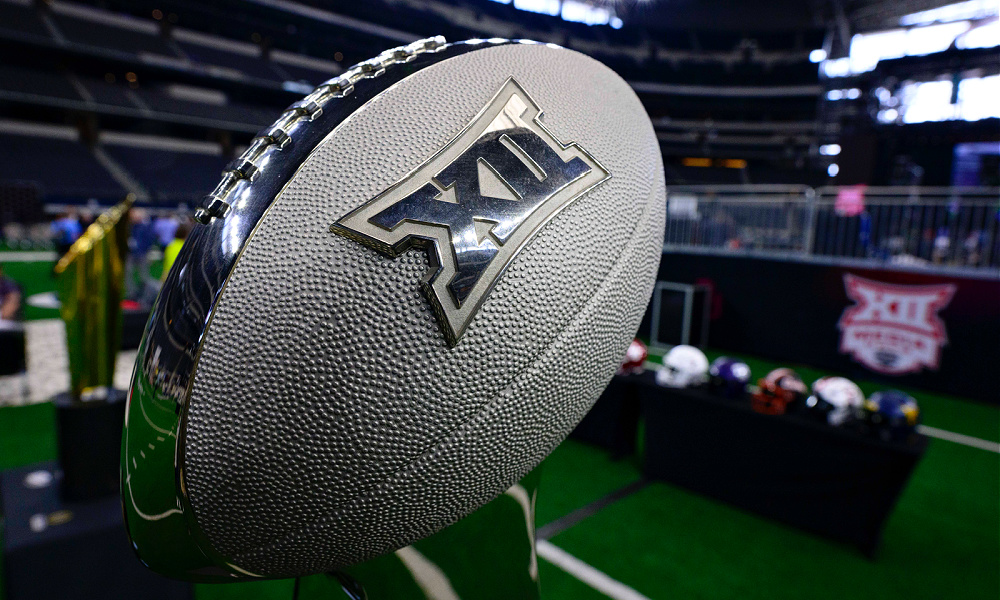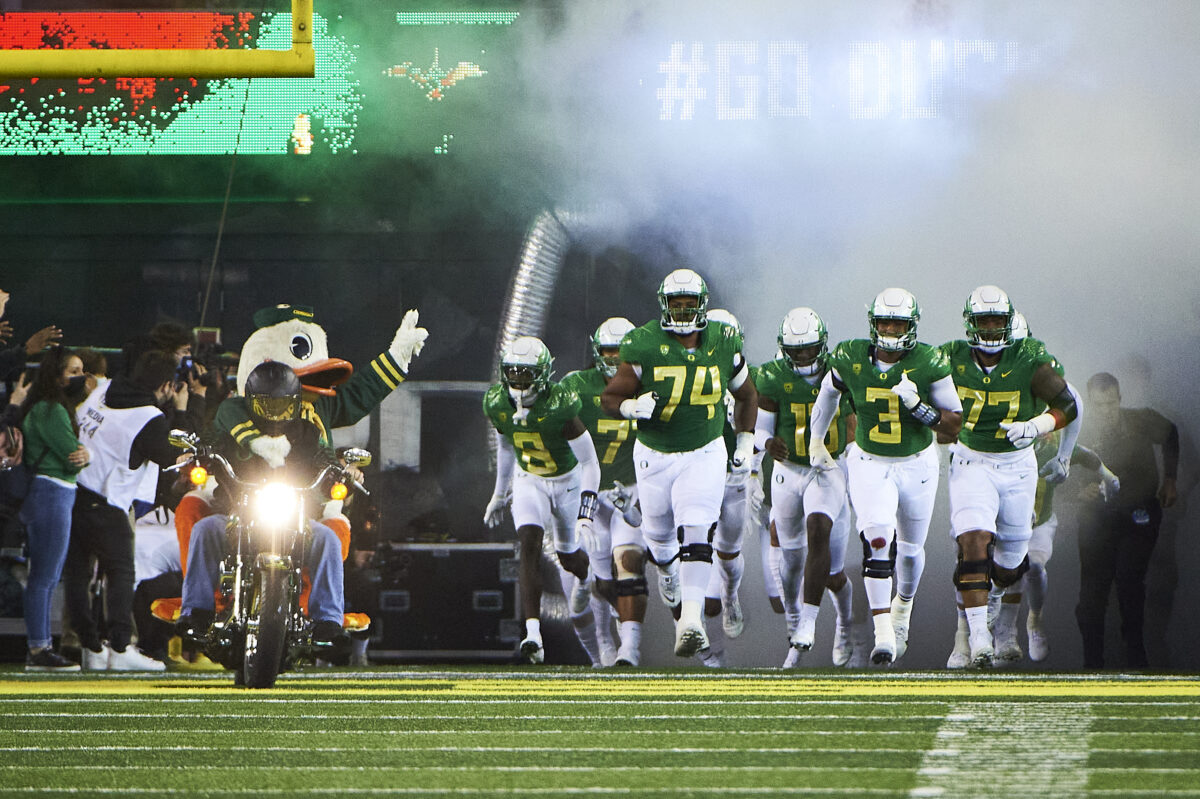The Big 12 and Pac-12 won’t merge forces to combat all that’s happening in the realignment and expansion world. Now what for these two conferences?
Daily Cavalcade of Whimsy
– Contact/Follow @ColFootballNews & @PeteFiutak
[jwplayer PkCtjTd4-boEY74VG]
Sorry if this take sucks, it’s not my fault …
My best points were lifted by the Big Ten and now the Big 12 is open for business with my mid-level opinions.
– 2022 CFN College Football Preview of Every Team
May you all have a day full of the swagger the Big 12 is walking with right now
It was revealed on Monday night that the Pac-12 and Big 12 won’t be sharing their toys with one another.
The friendship probably would’ve been an overall plus for both, but goes against the current cutthroat expansion and realignment climate – they both think they can do more on their own, at least the Big 12 does.
The harsh reality is that the Pac-12 and Big 12 could combine forces, add other schools, resources, Megan Thee Stallion, and Season 5 of Stranger Things and still not come close to getting the attention paid to the Big Ten and SEC, but that’s not fair. These two can – and will – do just fine for themselves depending on what happens next.
Why couldn’t the Big 12 and Pac-12 form an alliance – a real one, and not the fake détente the Pac-12 had with the Big Ten and ACC?
Here’s the problem – or the positive, depending on which side you’re on – now that these two will likely try to poach the other’s territory: the Big 12 is in a position of power.
Which Big 12 schools make sense for the Pac-12?
[lawrence-related id=548508]
From an academic prestige standpoint – Tier 1 research status is the baseline, but the big conferences really want those with an AAU membership – along with potential markets and overall branding, Kansas makes a whole lot of sense, and that’s even a stretch. That’s about it, and there’s a reason.
Of course the Big 12 has solid academic institutions, far better football fan bases who actually watch and care about the sport, and decent enough markets to consider, but when it comes to branding and fit, do any of its members on their own change the Pac-12 dynamic? Not really.
Replacing USC with, say, TCU won’t move the needle enough to matter for the Pac-12.
And on the flip side, which Pac-12 schools make sense for the Big 12?
All of them, because the league already has its solid base in place without the Pac-12’s fear of being poached by the Big Ten.
Remember, this is about markets, and footprints, and expanding and improving the brand.
Are Oregon State and Washington State two superstar options in the expansion discussion? No, but both of them would open up new areas for the Big 12.
Does anyone in San Francisco care about Cal or Stanford football? Not really – I’m being nice about this – but the Bay Area is a massive market with a whole lot of alumni from other schools. The academic side of things matters with the presidents, alumni, and donor bases – Cal and Stanford work in a Rutgers-to-Big-Ten sort of way. No way those two go to the Big 12, but the Big Ten?
Remember, the Pac-12 has the University OF Oregon. The University OF Washington. The University OF Arizona. The University OF Utah. The University OF California. The University OF Colorado. There’s a prestige in having a state’s flagship school.
Not dogging the Big 12 schools in any way – the Big 12 has the University OF Kansas and the University OF West Virginia, but it doesn’t have the University of Utah, or the University of Iowa, or the University of Oklahoma, or the University of Texas.
That’s hardly the end of the world when it comes to the business side of expansion, but for a Pac-12 Conference that always had its own niche, it’s an ego hit to not have any “University OF” schools to bring aboard. It’s also a killer that it can’t go grab any monsters to replace what it lost – other than Notre Dame in a dream world, but that’s for a different day.
On the flip side, the Big 12 is far more likely to flip Colorado, Utah, Arizona State, and Arizona than the Pac-12 is at getting, say, Iowa State and Oklahoma State, who make a ton of sense but aren’t going to bail for the Pac-12 brand in the current situation.
Again, the Big 12 has the upper-hand here.
It’s got the improved TV contract likely coming. It landed huge schools with good markets in Cincinnati, Houston, and UCF, and it has an underappreciated gem in this whole process with BYU and its international fan base.
I still say the Big 12 should be all over USF, and beat the Pac-12 to the punch on San Diego State and UNLV, but it’s clearly thinking big. It wants Pac-12 schools and it might just be able to get them.
So now, the Pac-12 has to D up big-time.
It has to come up with something fast to put in front of its remaining member schools to show there’s still life without USC and UCLA.
There has to be proof of a better media deal and more positive things on the horizon. It doesn’t have to be massive, but it has to be something to make it look like there’s a future.
Copy what the Big 12 just did and go get big schools that make sense – and bite the bullet on the whole Tier 1 thing, for now. SDSU, UNLV, and Fresno State or Boise State don’t make up for losing USC and UCLA, but it evens the playing field a bit with the Big 12 after its recent moves.
Again, do something.
So what’s going to happen?
I could be very, very wrong here, and it could all blow up by the time you’re done reading this sentence, but my best guess is that everything chills out for a while.
The next move – if any – will probably be from the Big Ten, but it doesn’t mean everyone won’t be spending the next several weeks and months trying to put deals together.
Remember, the Big 12 was supposedly dead around this time last year – I’m old enough to remember when the American Athletic Conference was supposedly going to poach the Big 12, not the other way around – and no, the Pac-12 probably isn’t the new Southwest Conference, Big East, or WAC.
No, this merger didn’t work, but that’s okay – it’ll be more fun for the rest of us.
This Big 12 vs. Pac-12 business battle is about to get spicy.
[protected-iframe id=”361699434b6d70baf15f631ed2408ac1-97672683-92922408″ info=”https://www.googletagservices.com/tag/js/gpt.js” ]
– 2022 College Football Schedules: All 131 Teams
